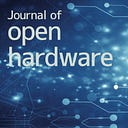Enabling American Science through Open Source Hardware
This blog is part of a series on open hardware and key messages for public policy. Read the introduction and access other #OHpolicy blogs here.
By Alicia Gibb, Executive Director, Open Source Hardware Association
The US is primed and ready for open source hardware to accelerate scientific breakthroughs, but open source hardware needs a cemented place on the intellectual property landscape within the sciences enabling a faster, more efficient acceleration. If we can cement science using open source hardware, we’ve got a path to expanding American manufacturing. Many businesses profit from open source hardware, demonstrating that it is a lucrative business model. The field of science needs equipment for all sorts of experiments and lab work. Let’s apply the groundwork already laid in the United States for open source hardware to be the default for science.
Simply stated, open source hardware is “hardware whose design is made publicly available so that anyone can study, modify, distribute, make, and sell the design or hardware based on that design”. The Open Source Hardware Association (OSHWA) houses that definition and is the global standards organization for open source hardware.
Many aspects of open source hardware share similarities with scientific practices. The benefits overlap between the open source and scientific communities, and using open source hardware as a licensing structure can show intention for scientists and can be more efficient for the scientific community. Open source hardware is relevant to scientific innovation through altruism, citation, repeatability, distributability and divisibility. In fact, the importance of citation (or attribution as it’s called in the open source hardware community), repeatability, and replicability are pillars of both the science community and the open source community. The sharing of these pillars means that scientific innovation and research in the US is advantageous for open source hardware to play a role.
The same traits that drive scientific exploration drive open source collaboration. People do science for altruistic reasons and to contribute to the public good. Similarly, people do open source hardware for altruistic reasons and to contribute to the public good. Both share the need for information to be larger than one’s self. For centuries scientific discovery has been shared through publication and documentation. With the advent of the internet, people around the world can now, similarly, share their hardware innovations, making it possible to produce a collaborator’s hardware design in multiple locations.
Academics are rewarded for the number of citations their research attains. Open source hardware works on the same principle; the best, most innovative hardware devices are replicated, derived from, and used as a starting point for further development so long as proper attribution is in place. Science generates citations, and open hardware generates attribution. Attribution states who your hardware is built off of, similar to a citation of research.
In science, you are only successful when your results have been replicated. With scientific data, there is always the variable of different equipment manufacturers. If you can replicate the methods all the way down to the equipment layer, the science becomes more sound, cheaper, and faster to verify. Transparency and sharing methods are needed for good science. Open source hardware is the key to enabling the scientific method to operate at a much faster pace.
Open source hardware is more distributable and divisible. As we’ve seen from the global response to the COVID-19 pandemic, when lives are on the line, a nation cannot have single point failures within their supply chain. Medtronic opened their patents asking for help producing ventilators; Ford used the University of Wisconsin’s open source face shield to accelerate the production of millions of PPE; and makers all over the US put their sewing machines to use creating thousands if not millions of masks and PPE for their communities. Divisible hardware means more manufacturers are able to contribute knowledge and labor, decreasing supply chain vulnerabilities.
International progress in open source hardware can support American innovation and the US should compete on this front. For example, CERN, the European Organization for Nuclear Research, has its own open source hardware licenses; the European Commission is currently studying the impact of open source hardware in the EU. And yet the foundation has been laid for open source hardware in the US. The US has some of the largest open source hardware companies in the world. It is home to the Open Source Hardware Association, the standards body for open source hardware and the broadest open hardware community, as well as other open hardware foundations and groups in specific fields, like robotics, manufacturing, chip fabrication, engineering, wearables, and, of course, science. The US is currently ahead in open source hardware in several ways, we can build on this progress. Science, technology, and manufacturing within the United States will only benefit from an increase of innovation and competition that comes with open source hardware.
